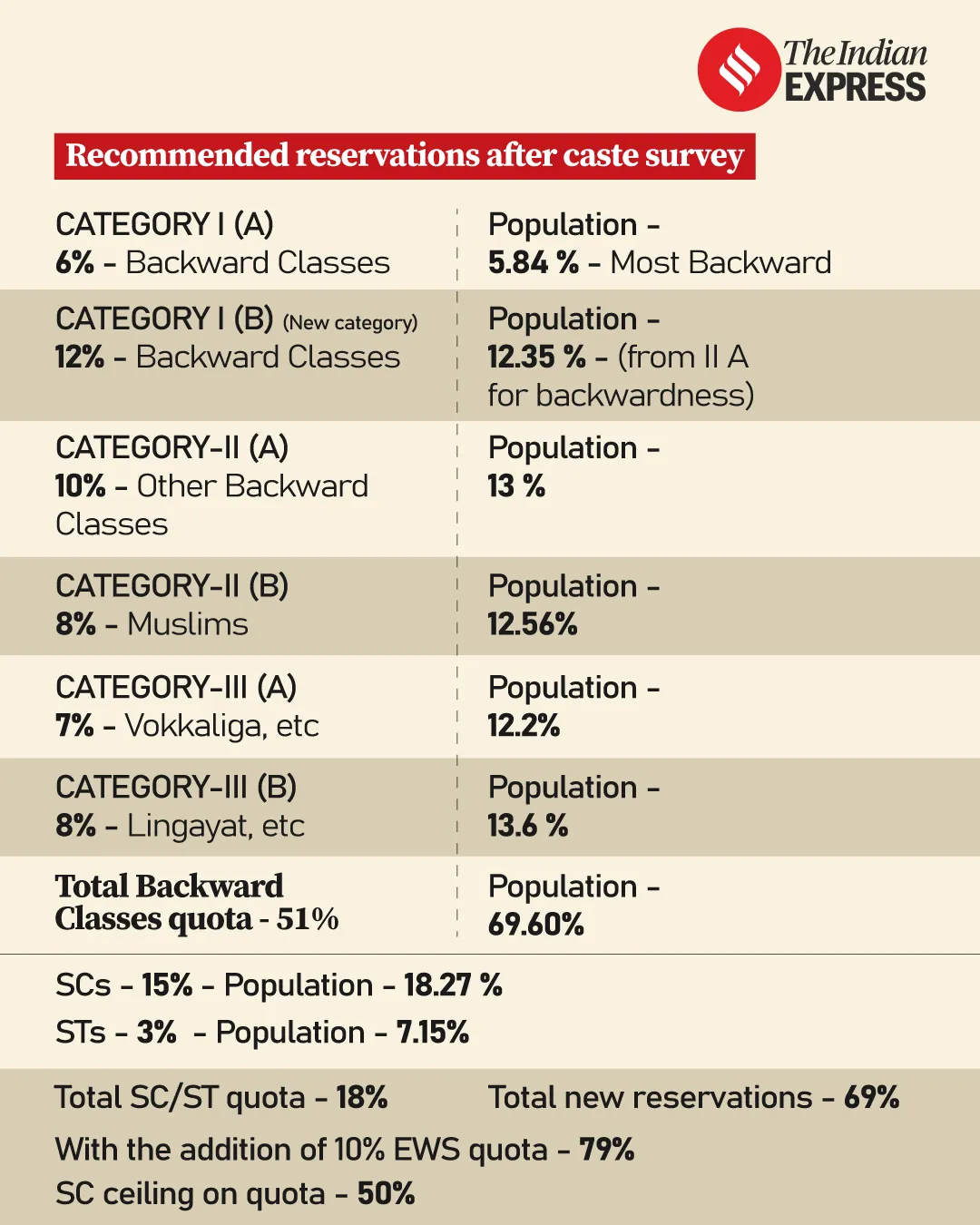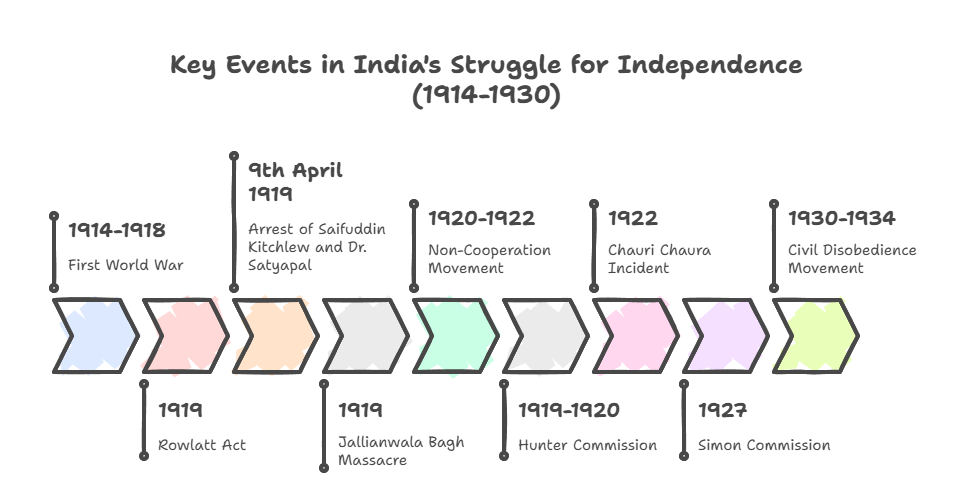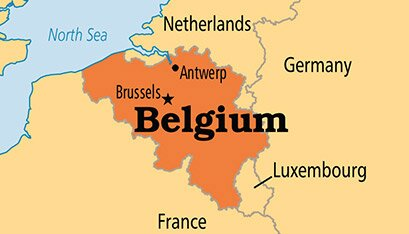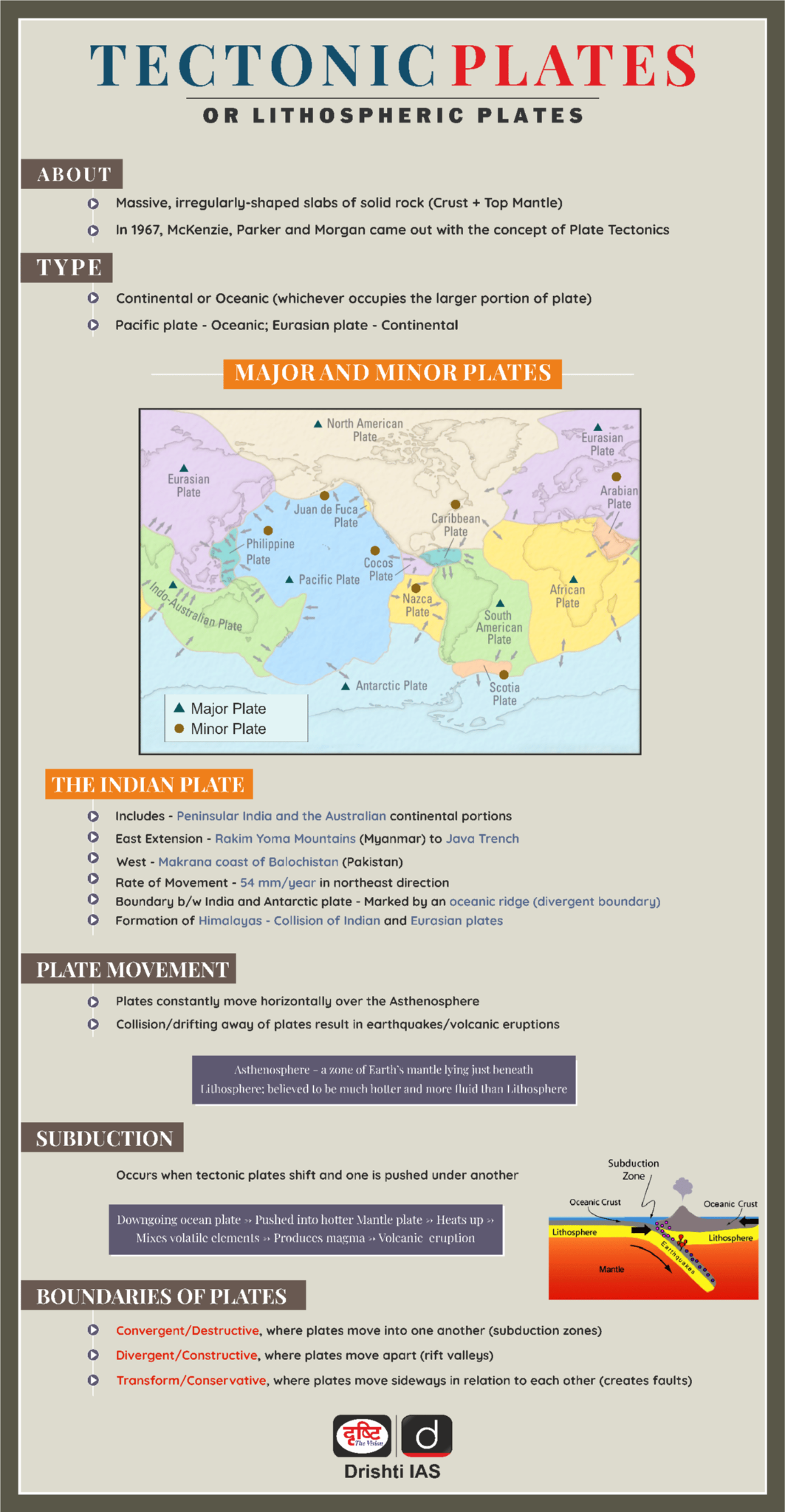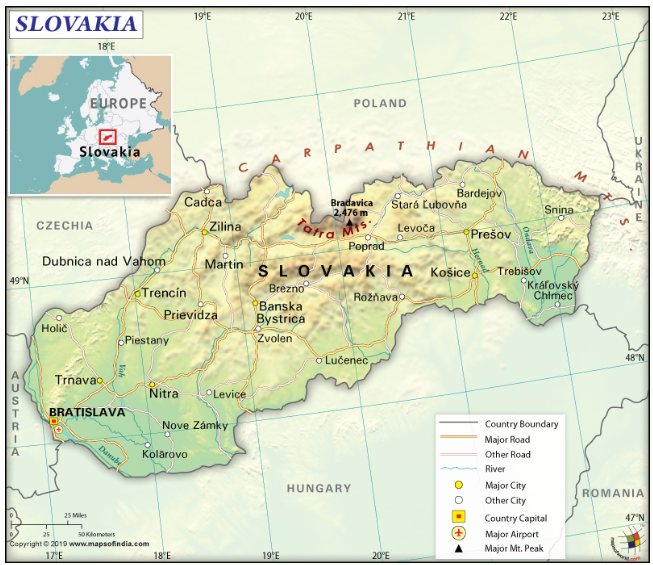Indian Polity
Telangana First to Implement SC Sub-Categorisation
For Prelims: Scheduled Castes, Scheduled Tribes, President, Sub-categorization
For Mains: Sub-categorisation of Castes, Mechanisms, Laws, Institutions & Bodies Constituted for Protection & Betterment of Vulnerable Sections.
Why in News?
Telangana notified the implementation of the Telangana Scheduled Castes (Rationalisation of Reservations) Act, 2025, becoming the first state in India to operationalise sub-categorisation of Scheduled Castes (SCs).
- This follows the 2024 Supreme Court judgment in the case State of Punjab v. Davinder Singh, which upheld the constitutionality of sub-classifying SCs and Scheduled Tribes (STs).
What is Sub-Categorisation Within Castes?Click here to Read: Sub-Categorisation Within Castes |
What is the Telangana Scheduled Castes (Rationalisation of Reservations) Act, 2025?
- Purpose: The Act restructures SC reservations in Telangana by sub-categorizing based on socio-economic and educational backwardness.
- The Shamim Akhtar Commission examined over 8,600 representations from SC communities, considering factors like population, literacy, employment, education access, financial aid, and political participation.
- Categorisation Details: The SCs in Telangana are categorised into three groups, with this sub-categorisation falling within the existing 15% SC reservation quota in the state.
|
Group |
No. of Sub-Castes |
% of SC Population |
Reservation (%) |
Category Description |
|
Group I |
15 |
3.288% |
1% |
Most socially, economically, and educationally disadvantaged. |
|
Group II |
18 |
62.748% |
9% |
Moderately benefitted SC communities. |
|
Group III |
26 |
33.963% |
5% |
Significantly benefitted SC communities. |
Note: Reservation for SCs in Telangana is based on the 2011 Census, but with the SC population now at 17.5%, the government plans to consider increasing it once the next Census data is available
What are the Constitutional and Legal Aspects of SC Sub-Categorisation?
- Constitutional Provisions:
- Article 14: Permits reasonable classification to achieve substantive equality. Sub-classification is permissible if based on intelligible differentia (a clear and understandable basis for distinguishing one group from another) and a rational nexus (a logical connection between the classification and the goal it aims to achieve).
- Article 15(4) and 15(5): Empower the State to make special provisions for the advancement of socially and educationally backward classes, including SCs and STs, in education and institutions.
- Article 16(4): Permits reservation in public employment for any backward class of citizens that is not adequately represented in services.
- Article 341(1): Provides for the identification of SC by the President in consultation with the Governor.
- Article 341(2): Parliament may by law include or exclude any caste, race, or tribe from the list of SCs by passing a law.
- Key Judicial Interpretations:
- E.V. Chinnaiah v. State of Andhra Pradesh (2004): Supreme Court ruled that the SCs form a homogeneous class and any sub-classification within SCs would amount to tinkering with the Presidential List under Article 341.
- As only Parliament can amend the list, the Court declared sub-classification by states as unconstitutional.
- State of Punjab v. Davinder Singh (2024): A seven-judge Constitution bench overruled Chinnaiah verdict and has upheld that states can sub-classify SCs and STs within the reservation quota based on varying levels of backwardness, using empirical data and historical evidence.
- Such sub-classification must avoid political motives and is subject to judicial review.
What are the Arguments For and Against Sub-Categorisation?
|
Aspect |
Arguments For Sub-Categorisation |
Arguments Against Sub-Categorisation |
|
Targeted Support |
|
|
|
Addressing Internal Inequalities |
|
|
|
Constitutional Flexibility |
|
|
Conclusion
Sub-categorisation aims to address deep-rooted inequalities by focusing on the most disadvantaged, but it risks fragmenting the unity that has historically strengthened Dalit movements. Genuine social justice transcends policy frameworks, tackling the root of systemic oppression. The challenge lies in ensuring these reforms uplift the truly marginalized without weakening the collective power needed to confront the persistent caste hierarchy.
|
Drishti Mains Question: Examine the significance of sub-categorisation of SCs. How does this move align with the principles of social justice in India? |
UPSC Civil Services Examination, Previous Year Question:
Prelims
Q. Consider the following organizations/bodies in India: (2023)
- The National Commission for Backward Classes
- The National Human Rights Commission
- The National Law Commission
- The National Consumer Disputes Redressal Commission
How many of the above constitutional bodies?
(a) Only one
(b) Only two
(c) Only three
(d) All four
Ans: (a)
Mains:
Q. What are the two major legal initiatives by the State since Independence addressing discrimination against Scheduled Tribes (STs). (2017)

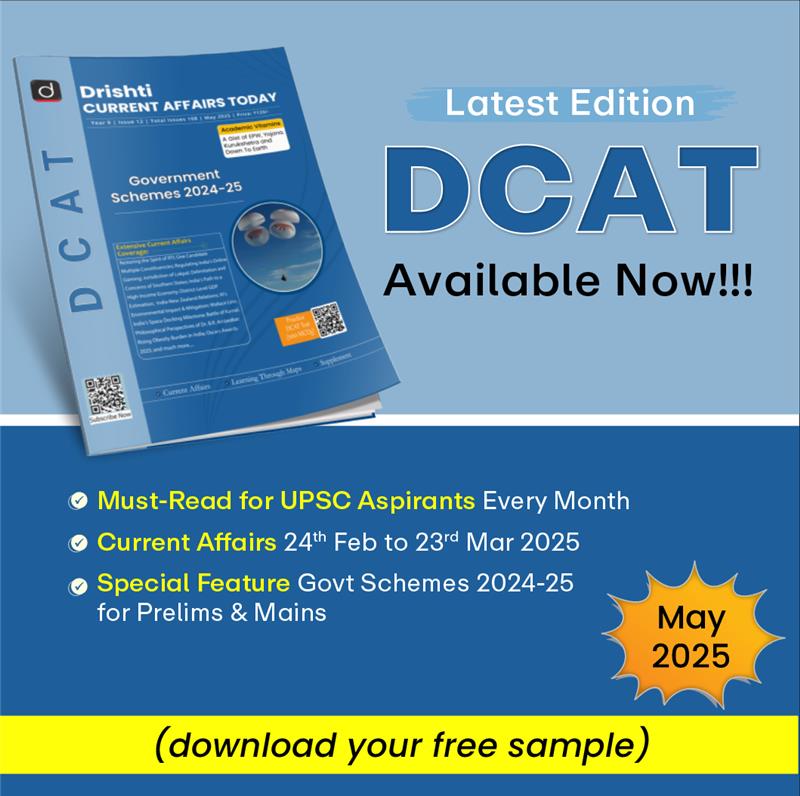
Indian Economy
Hand and Power Tools Sector
For Prelims: NITI Aayog, Hand and Power Tools, RoDTEP, Quality Control Orders, Micro, Small and Medium Enterprises
For Mains: India’s tools industry, Industrial Policy and Manufacturing, Challenges to Industrial Expansion
Why in News?
NITI Aayog (National Institution for Transforming India) released a report titled ‘Unlocking $25+ Billion Export Potential – India’s Hand & Power Tools Sector’, outlining a roadmap to boost Tools exports to USD 25 billion by 2035, supporting the vision of Viksit Bharat @2047.
What are the Key Trends in the Hand and Power Tools Sector?
- Global Market: The global tools market, valued at around USD 100 billion in 2022, is projected to grow to USD 190 billion by 2035.
- The market is divided into hand tools (USD 34 billion, expected to grow to USD 60 billion) and power tools (USD 63 billion, expected to grow to USD 134 billion), with balanced growth in both sectors.
- China dominates global exports, holding about 50% of the hand tools market with USD 13 billion and 40% of the power tools market with USD 22 billion
- India’s Current Position: India’s tools industry is a small player globally, with USD 600 million in hand tools exports (1.8% global market share) and USD 425 million in power tools exports (0.7% global market share).
- Opportunity for India: India has the potential to unlock USD 25 billion in exports by targeting 10% of the global market share in power tools and 25% in hand tools by 2035.
- Achieving this target could create 3.5 million jobs, contributing significantly to India's economic growth and employment and position India as a global leader in the tools industry.
What are Hand and Power Tools?
- Tool: A tool is a hand-held device used to perform a specific task, such as drilling, cutting, sanding, or polishing.
- Types of Tools
- Hand Tools: Non-motorized tools that rely on manual effort. Examples include wrenches, screwdrivers, pliers, and hammers.
- Hand Tools are affordable, labor-intensive, and ideal for tasks requiring precision and human control.
- Power Tools: Tools powered by electricity, hydraulics, or pneumatics, often incorporating motors.
- Examples include electric drills, saws, electric screwdrivers, grinders, cutters.
- Electric power tools include corded tools, which require a direct power connection, and cordless tools, which are battery-powered for greater mobility.
- Hand Tools: Non-motorized tools that rely on manual effort. Examples include wrenches, screwdrivers, pliers, and hammers.
What are the Challenges Undermining India’s Tools Industry?
- Cost Competitiveness: India faces a 14-17% cost disadvantage compared to China.
- Although India’s labor is cheaper than China’s, restrictive labor laws (e.g., limits on overtime and daily working hours) reduce labour flexibility and increase operational costs
- Unreliable power supply and high costs of maintaining captive generators for electricity (INR 18/unit) further add to the operational expenses.
- Raw Material Dependency: India, despite being a major steel producer, relies heavily on imports of high-quality raw materials and components, with finished stainless steel imports expected to hit a record 1.3 million tonne (MT) in FY25.
- High export duties by countries like China and Vietnam on materials like scrap steel hinder raw material access.
- Technical Limitations: Limited access to advanced manufacturing technologies and insufficient Research and Development (R&D) capabilities are hindering innovation.
- Indian manufacturers rely on imported high-value components, like ratchets for spanners, leading to higher production costs and hindering domestic value chain capture.
- High Machinery Costs: The tools industry also faces high machinery costs, particularly for advanced machinery like CNC (Computer Numerical Control) machines, which are essential for precision manufacturing.
- These machines are subject to import duties and surcharges, further raising costs.
- Scaling Constraints: Limited availability of industrial land, especially in key hubs like Punjab, where land costs range from Rs 3-5 crores per acre.
- High transport costs from inland states like Punjab raise export expenses, reducing India’s global competitiveness.
- India's tools sector is dominated by small-scale units with limited resources, hindering scalability and innovation.
- Regulatory barriers, such as strict Floor Area Ratio (FAR) norms, further limit land usability, hindering efficient scaling and the industry's ability to compete globally.
- Inadequate Government Schemes: Existing financial support schemes like Remission of duties and taxes on exported products (RoDTEP) are not efficiently addressing the industry's financial needs.
- For example, the RoDTEP rebates for hand and power tools exporters are minimal (1.1% and 0.9% of Freight on Board (FOB) value respectively), which is insufficient to address the 15% cost disadvantage faced by Indian manufacturers.
- High taxes and complex export obligations discourage small manufacturers. India’s effective tax rate (34%) is higher than China (25%) and Vietnam (20%).
- Unlike China and Vietnam, India lacks R&D tax incentives, making it less attractive for manufacturers.
Indian Government's Initiatives Related to Tools Industry
- RoDTEP: Hand tools exporters get rebates of 1.1% as a percentage of their FOB value, and power tools get rebates of 0.9% as a percentage of their FOB value.
- Duty Free Import Authorisation (DFIA): The DFIA scheme allows duty-free import of inputs physically incorporated in an export product, including packaging materials, fuel, oil, and catalysts used in production.
- Inputs imported under this scheme are exempted of the Basic Customs Duty only.
How Can India Strengthen and Modernise Its Tools Industry?
- Building Specialized Tool Clusters: NITI Aayog's report suggests developing 3-4 hand tool clusters covering approximately 4,000 acres by 2035, including one in Punjab, to improve production efficiency and attract investment.
- Clusters should feature plug-and-play infrastructure with worker housing, R&D facilities, testing centers, and reliable utilities like water and power.
- A Public-Private Partnership (PPP) model involving a Special Purpose Vehicle (SPV), private developers, and a Cluster Authority should be adopted for governance and development.
- Address Raw Material Challenges: Rationalize Quality Control Orders (QCOs) and reduce import duties on essential raw materials like steel, PVC, and motors.
- Simplify Policies: Simplify the Export Promotion Capital Goods (EPCG) scheme by easing Authorized Economic Operator (AEO) requirements, reducing penalties like interest on defaults, and lowering import duties on machinery.
- Under the National Manufacturing Mission (NMM) announced in Budget 2025-26, simplify regulatory approvals for tools Micro, Small and Medium Enterprises (MSMEs) and establish dedicated R&D councils to foster technological advancements.
- Liberalization of Land Regulations: Relaxation of FAR norms and industrial land regulations can help MSMEs access affordable land for scaling production.
- This will reduce production costs and enable manufacturers to expand capacity efficiently.
- Adoption of Advanced Manufacturing Technologies: India should encourage the adoption of cutting-edge technologies such as 3D printing in tool manufacturing. This will improve precision, reduce costs, and enhance production efficiency.
- Diversifying Product Range: Indian manufacturers should target premium tools like battery-powered, high-precision, and automated variants to tap global demand and widen market reach.
Conclusion:
To realize its USD 25 billion export potential by 2035, India’s tools industry needs targeted policy support, robust infrastructure, and greater R&D investment. Addressing raw material bottlenecks, scaling challenges, and high operational costs is crucial. With strategic reforms and technology adoption, India can emerge as a global manufacturing hub.
|
Drishti Mains Question: What are the challenges faced by India’s hand and power tools industry, and what reforms should be implemented to unlock its export potential by 2035 |


Important Facts For Prelims
Karnataka Caste Survey Report
Why in News?
The Karnataka government tabled the caste survey report, officially known as the Socio-Economic and Education Survey, conducted by the State Backward Classes Commission.
- The survey recommends a significant revamp of the reservation quota structure and the introduction of new subcategories.
What are the Key Findings of the Karnataka Caste Survey?
- Key Findings: Other Backward Classes (OBCs) population estimated at 69.6% of the state's population, nearly 38% higher than earlier assumptions.
- Dominant communities like Vokkaligas (at 12.2%) and Lingayats (at 13.6%) were found to be numerically weaker than earlier estimates of 17% and 15% respectively.
- Recommendations: The survey recommends raising the OBC quota from current 32% to 51%, a significant increase that challenges the Supreme Court's 50% reservation cap set in the Indra Sawhney (1992) judgment.
- A new sub-category, I B is suggested to be created for the Most Backward Classes, carved from the II A category.
Note: In Indra Sawhney v. Union of India (1992), the Supreme Court set a 50% cap on reservations in government jobs and education to balance affirmative action with merit. It also introduced the 'creamy layer' concept, excluding affluent OBCs from reservations.
What is a Caste Survey?
- About: A Caste Survey is a method of collecting data from a sample of the population, focusing on caste-based social, economic, and educational conditions. It only surveys a subset of the population.
- It is usually conducted by state governments to create a comprehensive caste-wise database for policy decisions.
- Need: The broad categories of SC, ST, and OBC encompass diverse castes, often masking internal disparities. Without detailed caste data, dominant sub-groups tend to corner benefits, while truly disadvantaged groups remain underserved.
- This hampers targeted policymaking, making a caste survey essential for equitable representation and effective welfare delivery.
- Implications: Enables evidence-based policymaking and targeted welfare schemes. Supports demands for revisiting the 50% reservation ceiling based on demographic and socio-economic realities.
- Helps curb misuse of reservation benefits by affluent sections of backward classes by highlighting intra-group disparities.
Caste Census
- Caste Census is an exhaustive enumeration of the entire population, collecting detailed data on caste, socio-economic conditions, and other demographic factors, covering every individual in the country.
- The Caste Census is under the administrative control of the Ministry of Home Affairs, specifically the Registrar General of India (RGI) and the Census Commissioner of India.
- The Ministry of Rural Development launched the Socio-Economic Caste Census (SECC) in 2011, conducting a nationwide door-to-door survey to gather data on socio-economic status and caste composition.
- The SECC aimed to identify marginalized groups and improve welfare targeting. However, a significant portion of its data remains unreleased or only partially available, limiting its utility in policymaking and public discourse.
|
Drishti Mains Question: Examine the significance of the caste survey in addressing intra caste disparities and its implications on the reservation policy in India. |
UPSC Civil Services Examination, Previous Year Question
Mains
Q. Do government’s schemes for up-lifting vulnerable and backward communities by protecting required social resources for them, lead to their exclusion in establishing businesses in urban economies? (2014)
Q. Discuss the role of the National Commission for Backward Classes in the wake of its transformation from a statutory body to a constitutional body. (2022)

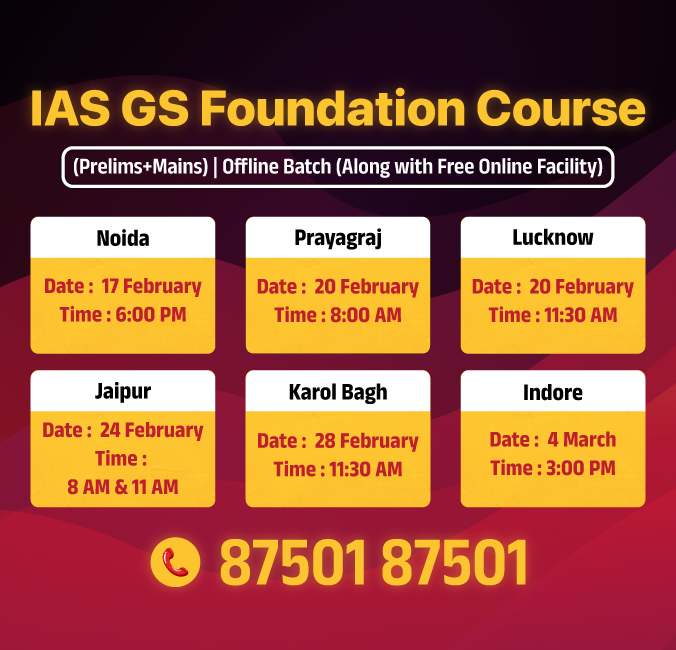
Indian History
Jallianwala Bagh Massacre
For Prelims: Jallianwala Bagh Massacre, Rowlatt Act 1919, World War I (1914–18), Non Cooperation Movement (1920–22), Hunter Commission.
For Mains: Non Cooperation Movement (1920–22), History of India’s struggle
Why in News?
The Prime Minister of India paid tribute to the victims of the Jallianwala Bagh massacre in 1919 and honored Sir Chettur Sankaran Nair, the nationalist jurist who fought a landmark legal battle against a British official responsible for the massacre.
What was the Jallianwala Bagh Massacre?
- About: The Jallianwala Bagh massacre occurred on 13th April 1919, when hundreds of innocent Indians were killed by troops of the British Indian Army, mostly Gurkhas, on orders of Brigadier-General REH Dyer.
- The people had assembled peacefully to protest against the Rowlatt Act of 1919.
- Jallianwala Bagh is a historic garden and memorial near the Golden Temple in Amritsar, Punjab.
- Background: Mahatma Gandhi had called for a non-violent satyagraha (first mass strike), against the Rowlatt Act starting with a hartal on 6th April 1919.
- In Punjab, on 9th April, nationalist leaders Dr. Satyapal and Saifuddin Kitchlew were arrested without reason and taken to an unknown place.
- This led to widespread anger, and on 10th April, thousands of Indians came out in protest. In response, the British imposed martial law, giving full authority to Brigadier-General Dyer.
- Day of the Incident: On 13th April, which was Baisakhi, a large number of villagers unaware of the restrictions gathered at Jallianwala Bagh.
- Dyer reached the spot with troops, blocked the only exit, and ordered firing on the unarmed crowd. Over 1,000 men, women, and children were killed.
- Aftermath: The Jallianwala Bagh Massacre marked a turning point in India's freedom struggle, deeply shaking public faith in British rule.
- It became a key reason for Mahatma Gandhi to launch the Non-Cooperation Movement (NCM) (1920–22), along with other factors such as the Khilafat issue, the growing demand for Swaraj, and the hardships caused by World War I.
- Gandhiji gave up the title of Kaiser-i-Hind and Rabindranath Tagore returned his knighthood in protest.
- Gandhi, disturbed by the widespread violence withdrew the movement on 18th April 1919.
- The British Government set up the Hunter Commission (1919) to investigate the Jallianwala Bagh massacre and, in its 1920 report, it unanimously condemned General Dyer's actions. However, it did not recommend any penal or disciplinary action against him.
- Congress formed a non-official committee, comprising Motilal Nehru, Gandhi, and others, to investigate the incident, condemning Dyer's actions as inhuman and criticizing the imposition of martial law in Punjab as unjustifiable.
- Udham Singh, originally Ram Mohammad Singh Azad, assassinated Michael O'Dwyer, the Lieutenant Governor responsible for the 1919 Jallianwala Bagh massacre.
- He was hanged in 1940, and his ashes were returned to India in 1974.
What was the Rowlatt Act 1919?
- The Anarchical and Revolutionary Crimes Act, 1919 (also known as Rowlatt Act of 1919) was a repressive legislation enacted by the British government of India during World War I (1914-1918) to curb anti-colonial activities.
- The Act was introduced based on the recommendations of the Sedition Committee, chaired by Sir Sidney Rowlatt.
- It effectively replaced the Defence of India Act (1915) enacted during the First World War with a permanent law, re-imposing restrictions on freedom of speech and assembly in India.
- It allowed strict control over the press and granted the government extensive powers to suppress political dissent and enabled the detention of individuals without trial for up to 2 years.
- It enabled the arrest of individuals on mere suspicion of 'treason,' with trials conducted in secrecy and without legal assistance.
- A special panel of 3 high court judges was designated to try such suspects, with no higher court of appeal.
- This panel could accept evidence not admissible under the Indian Evidence Act, and the law of habeas corpus was suspended, undermining civil liberties.
- This legislation further intensified the colonial repression in India and played a significant role in fueling the national movement for independence.
Sir Chettur Sankaran Nair
- About: He was a prominent Indian nationalist, lawyer, and social reformer born in 1857 in Kerala.
- Career & Contribution:
- He served as a judge in the Madras High Court and became the youngest President of the Indian National Congress in 1897.
- As a progressive jurist, he delivered landmark judgments like Budasna v. Fatima (1914), upholding inter-caste and inter-faith marriages and opposing caste-based discrimination.
- He was appointed to the Viceroy’s Executive Council and contributed to the Montagu-Chelmsford Reforms (1919), which allowed more Indian participation in governance.
- Role in Jallianwala Bagh Case: Nair strongly opposed the Jallianwala Bagh massacre (1919) and resigned from the Viceroy’s Executive Council in protest.
- In his book Gandhi and Anarchy (1922), he held Michael O’Dwyer responsible for the massacre, leading to a defamation suit in a London court.
- Though the jury ruled 11–1 in O’Dwyer’s favour, Nair’s refusal to apologise made the trial a symbol of British bias and injustice, highlighting colonial repression and strengthening nationalist sentiments.
|
Drishti Mains Question: Discuss the role of Mahatma Gandhi in India’s freedom movement. How did his principles and strategies transform the nature and direction of the struggle for independence? |
UPSC Civil Services Examination, Previous Year Questions (PYQs)
Q. During the Indian Freedom Struggle, why did Rowlatt Act arouse popular indignation? (2009)
(a) It curtailed the freedom of religion
(b) It suppressed the Indian traditional education
(c) It authorized the government to imprison people without trial
(d) It curbed the trade union activities
Ans: (c)
Q 2. Who among the following is associated with ‘Songs from Prison’, a translation of ancient Indian religious lyrics in English? (2021)
(a) Bal Gangadhar Tilak
(b) Jawaharlal Nehru
(c) Mohandas Karamchand Gandhi
(d) Sarojini Naidu
Ans: (c)
Q3. With reference to the British colonial rule in India, consider the following statements: (2019)
- Mahatma Gandhi was instrumental in the abolition of the system of ‘indentured labour’.
- In Lord Chelmsford’s ‘War Conference’, Mahatma Gandhi did not support the resolution on recruiting Indians for World War.
- Consequent upon the breaking of Salt Law by Indian people, the Indian National Congress was declared illegal by the colonial rulers.
Which of the statements given above are correct?
(a) 1 and 2 only
(b) 1 and 3 only
(c) 2 and 3 only
(d) 1, 2 and 3
Ans: (b)
Mains
Q1. Bring out the constructive programmes of Mahatma Gandhi during Non-Cooperation Movement and Civil Disobedience Movement. (2021)


Rapid Fire
Himachal Pradesh 78th Foundation Day
Himachal Pradesh Day is celebrated annually on 15th April to mark the formation of the Chief Commissioner’s province of Himachal Pradesh on 15th April 1948.
- Background: It became a Part C state on 26th January 1950 with the implementation of the Constitution of India, later a Union Territory on 1st November 1956, and expanded in 1966 with hill areas from Punjab.
- It attained full statehood on 25th January 1971, becoming India’s 18th state under the State of Himachal Pradesh Act, 1970.
- Etymology: The name “Himachal” is derived from Sanskrit, “Hima” (snow) and “Anchal” (lap) aptly describing its geography nestled in the Himalayas.
- Borders: Himachal Pradesh shares its borders with the Indian union territories of Jammu & Kashmir and Ladakh, and the states of Punjab, Haryana, and Uttarakhand.
- Internationally, it shares a border with China.
- Economy: Himachal Pradesh’s Gross State Domestic Product for 2024-25 is Rs. 2.27 trillion (USD 27.27 billion). Exports in FY25 (until August) totaled USD 223.20 million, with drug formulations and biologicals contributing 69.5% of the total.
- Cumulative Foreign Direct Investment (FDI) inflows in Himachal Pradesh from 2019 to 2023 totaled USD 246.74 million.
| Read more: Statehood Day of Himachal Pradesh |


Rapid Fire
India-Belgium Extradition Treaty
Mehul Choksi, the fugitive diamond trader accused of defrauding Punjab National Bank of over Rs 13,500 crore, was arrested in Belgium after Indian authorities made a formal extradition request under the India-Belgium Extradition Treaty.
- India formally requested Choksi's extradition in August 2024, citing charges like criminal conspiracy, cheating, and bribery. Belgium approved it after confirming the charges are punishable locally.
- Fugitive Criminal: A person who is accused of, or who conspires, attempts, incites, or assists in committing an extradition offence abroad, or is involved in such offences while in India (as per Section 2(f) of the Extradition Act, 1962).
- Extradition Treaty: The Indian Extradition Act 1962 defines an 'Extradition Treaty' as a bilateral agreement between India and a foreign state for the extradition of fugitive criminals.
- The Ministry of External Affairs serves as the Central Authority for extradition matters.
- India-Belgium Extradition Treaty: The new Extradition Treaty, ratified in 2020, replaced the outdated 1901 treaty between Great Britain and Belgium, which was made applicable to India through an exchange of letters in 1958.
- The new treaty, currently in force between the Republic of India and the Kingdom of Belgium, enables the two countries to extradite fugitive criminals.
- The treaty mandates that extradition is only for crimes punishable in both countries and Extradition not obligatory for its own citizens.
- The requesting country must formally submit a request within 14 days of arrest and provide enough evidence within two months. Requests can be rejected if politically motivated.
Read more: Extradition Treaty between India and Belgium


Rapid Fire
Hadean Proto Crust
A study by Macquarie University suggests that unique chemical signatures linked to plate tectonics (& subduction) were already present in Earth’s early crust (Hadean proto crust) before tectonic plate movements began.
- Chemical signatures are specific chemical patterns in ancient rocks that serve as indicators of plate tectonic processes..
- Traditionally, these signatures, like enriched Light Rare Earth Elements (LREEs) and specific isotopic ratios (Nd, Sr, Pb) indicated subduction.
- However, the study finds that these signatures could form without subduction, challenging the idea that these signals are exclusive to plate tectonics.
- A subduction zone is the region where subduction occurs, marked by deep ocean trenches, volcanic arcs, and earthquakes.
Hadean Proto Crust & Hadean Aeon:
- The Hadean proto crust is Earth's earliest crust, formed within the first 200 million years of the Hadean Aeon (4.6 to 4 billion years ago), a period marked by extreme heat, volcanic activity, and a partially molten surface.
- Over time, parts of the molten surface cooled and solidified, forming the first crust.
- Hadean Aeon was followed by the Archean Eon (4 to 2.5 billion years ago), marked by the formation of Earth's first stable crust, the beginning of plate tectonics, and the emergence of life.
- As the surface cooled, thick crust formed the first continents, which moved over the semi-fluid asthenosphere beneath.
| Read More: Tectonic Plates |


Rapid Fire
President Visit to the Slovak Republic
President Droupadi Murmu's visit to the Slovak Republic (also known as Slovakia) was the first visit by an Indian President in 29 years, aimed at enhancing bilateral relations.
- President Droupadi Murmu was awarded the Doctorate Honoris Causa degree in Slovakia for her contributions to public service, women’s empowerment, and social justice.
- India-Slovak Republic Relations:
- Trade Relations: Bilateral trade crossed 1.28 billion Euros in 2024, with India maintaining a favourable trade balance.
- India’s key exports to Slovakia include mobile phones, footwear, garments, motor vehicle parts, medicaments.
- Slovakia's major exports to India include motor vehicles, machinery, pumps, transmission shafts.
- A Joint Economic Committee (JEC) established in 1995 to enhance India-Slovakia commercial ties.
- Space Cooperation: The first Slovak satellite, SKcube, was launched on Indian PSLV-XL in 2017.
- Nuclear Cooperation: MOU signed on safe use of nuclear energy for peaceful purposes between India and Slovakia.
- Trade Relations: Bilateral trade crossed 1.28 billion Euros in 2024, with India maintaining a favourable trade balance.
- Slovak Republic: It is a landlocked country in Central Europe. It borders Hungary to the south, Poland to the north, Czech Republic to the northwest, Austria to the west and Ukraine to the east.
- The Velvet Revolution (1989) ended communist rule in Czechoslovakia and led to the peaceful dissolution of the country into the Czech Republic and Slovakia in 1993 (often referred to as the "Velvet Divorce").
- Slovakia is a high-income developed economy with its capital at Bratislava and follows a parliamentary democratic republic system.
| Read more: India- European Union Relations |


Rapid Fire
World's Oldest Lifeforms
Ancient life forms like cyanobacteria, stromatolites and archaea offer insights into Earth's evolutionary resilience and ecological significance.
- Cyanobacteria (blue-green algae), emerging around 3.5 billion years ago, were the first organisms to perform oxygenic photosynthesis, triggering the Great Oxidation Event (~2.4 billion years ago), which enriched Earth's atmosphere with oxygen, enabling complex life.
- Stromatolites are layered rock-like structures formed by cyanobacteria colonies that trap and bind minerals, gradually hardening into rock.
- The oldest stromatolites, found in Western Australia, are about 3.5 billion years old, offering insights into ancient microbial ecosystems.
- Archaea are single-celled microorganisms distinct from bacteria, with genetic features closer to eukaryotes.
- Many are extremophiles, surviving in harsh environments and contributing to biogeochemical cycling. The endosymbiotic theory suggests eukaryotes evolved from archaea through the incorporation of a bacterium, leading to mitochondria.
- Armillaria ostoyae, the "humongous fungus," is the largest living organism, found in Oregon's Malheur National Forest (US), is over 8,000 years old, demonstrating remarkable ecological dominance and longevity.
- The Ginkgo biloba tree, dating back over 290 million years, is a "living fossil" with unchanged leaves since the Jurassic period.
- It survived the 1945 Hiroshima blast and shows no signs of aging, thriving even at 600 years old.
| Read More: Last Universal Common Ancestor (LUCA) |



